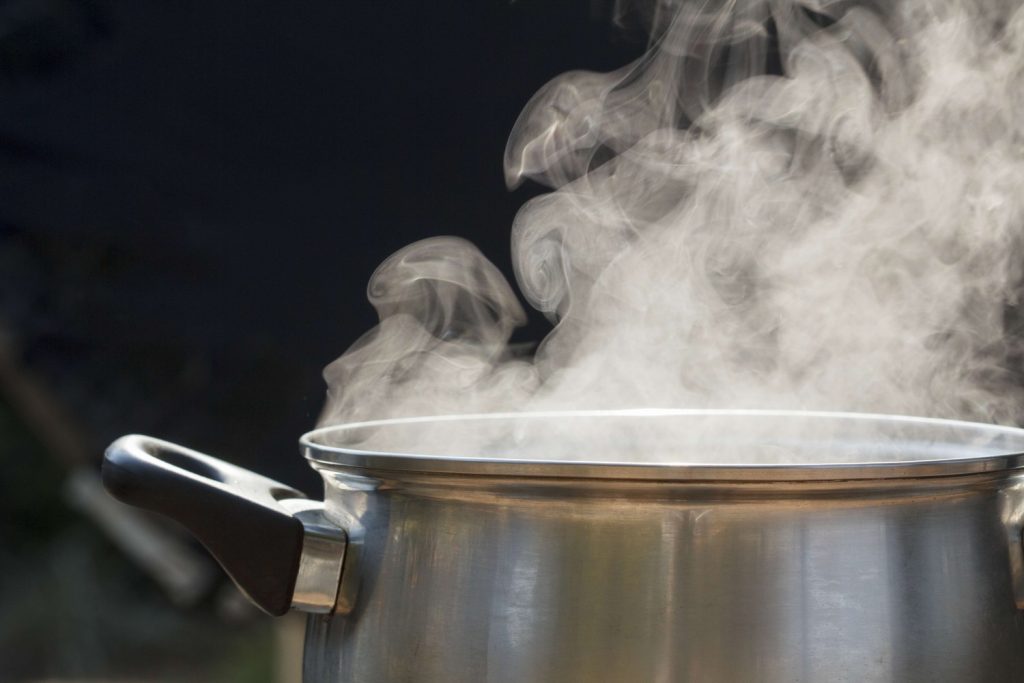Boil water advisories normally follow natural disasters or municipal failures, but preparation is key.
The history of human beings boiling water for consumption dates to a Sanskrit writing from around 2000 B.C. that described some methods for doing so over fire or by using the sun. Boiling water before drinking it made it taste better, look clearer, and seem safer than using dirty ditchwater. Of course, the ancient folk had no concept of microorganisms, pathogens, or bacteria. It would take a few thousand years to understand that near-invisible water borne bugs were the culprit behind getting sick from sipping water that flows downhill from the village latrine. Times have changed for the better.
Today in the United States, the extent of our drinking water concerns largely revolves around opening the sink tap, filling a glass, and forgetting about it. While there are some concerns in some parts of the country, Flint, Michigan comes to mind and even most recently in Houston, most of us can feel safe enough behind the defense of our local water treatment facility and its regulations and monitoring capabilities. But, even the most failsafe municipal systems can occasionally crack under the weight of natural disasters, infrastructure breaks, or other unforeseen circumstances. In those cases, a boil water advisory may be issued to notify you that their water may not be safe to consume.
What is a Boil Water Advisory?
Equivalent to a power outage, a boil water advisory is the water supply’s alert for a system failure. The local municipality will send out an alert to homeowners about potential contaminated water that should not be ingested. Most advisories are precautionary measures, but scenarios exist where contaminates can be introduced into the municipal water.
Natural Disasters: One of the most common triggers for a boil water advisory, a natural disaster such as a hurricane, earthquake, or extreme flooding can introduce run-off into the public water system in several ways.
Water Main Break: A water main break or pressure loss in the water system can result in contaminated water being introduced, allowing bacteria and microorganisms to enter the supply.
Service/Maintenance: Advisories will often be issued during or after routine service on water supply lines as a precautionary measure.
If a Boil Water Advisory is in Effect
Tap water must be disinfected or purified to remove potential contaminates. The Environmental Protection Agency (EPA) advises that any water used for drinking, ice making, food preparation, and brushing teeth should be heated to a boil for at least one minute followed by a cooling. Boiling the water will kill any pathogens, bacteria, and microorganisms potentially in the water. For bathing, showering, and cleaning, especially with children or individuals with disabilities, it is important to make sure that cleaning time is supervised so water doesn’t enter the eyes, mouth, or nose.
After An Advisory
Depending on the severity of the incident that triggered it, a boil advisory usually lasts between 24 to 48 hours. Once an advisory is lifted: Flush Plumbing: Run all your cold-water faucets on full for at least five minutes each. Dump Ice: For automatic ice makers, dump all the existing ice. To flush the lines that feed the ice maker, make and dump three batches of ice before letting the bin refill. Clean the ice bin with a disinfectant. Replace inline water filters: Replace inline filters such as the ones found in your refrigerator. Regenerate Softeners: Manually initiate a full regeneration on your water softener.
Give us a call for more information!
